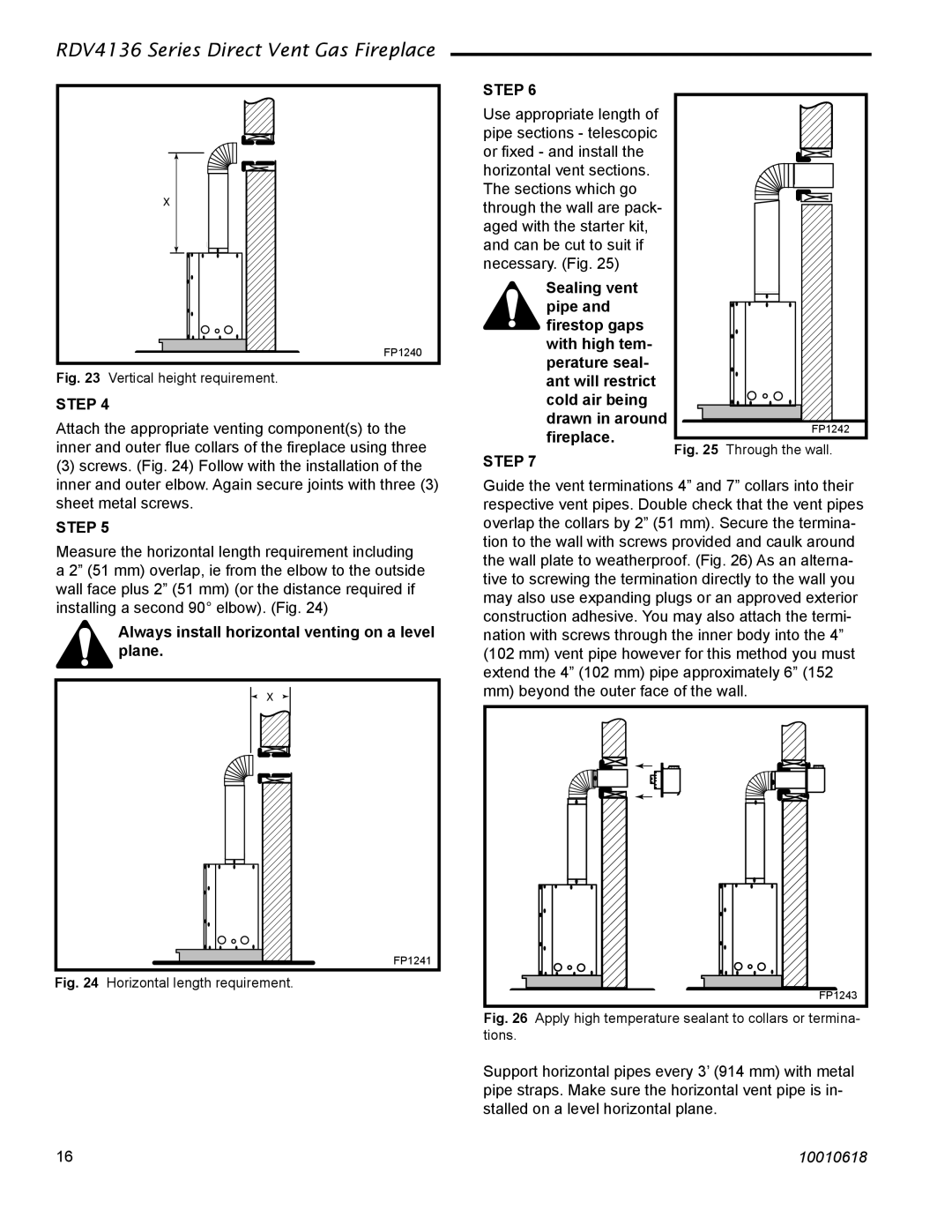
RDV4136 Series Direct Vent Gas Fireplace
X
FP1240
Fig. 23 Vertical height requirement.
STEP 4
Attach the appropriate venting component(s) to the inner and outer flue collars of the fireplace using three
(3) screws. (Fig. 24) Follow with the installation of the |
STEP 6
Use appropriate length of pipe sections - telescopic or fixed - and install the horizontal vent sections. The sections which go through the wall are pack- aged with the starter kit, and can be cut to suit if necessary. (Fig. 25)
Sealing vent pipe and firestop gaps with high tem- perature seal- ant will restrict cold air being drawn in around fireplace.
STEP 7
FP1242
Fig. 25 Through the wall.
inner and outer elbow. Again secure joints with three (3) |
sheet metal screws. |
STEP 5
Measure the horizontal length requirement including a 2” (51 mm) overlap, ie from the elbow to the outside wall face plus 2” (51 mm) (or the distance required if installing a second 90° elbow). (Fig. 24)
Always install horizontal venting on a level plane.
X
FP1241
Fig. 24 Horizontal length requirement.
Guide the vent terminations 4” and 7” collars into their respective vent pipes. Double check that the vent pipes overlap the collars by 2” (51 mm). Secure the termina- tion to the wall with screws provided and caulk around the wall plate to weatherproof. (Fig. 26) As an alterna- tive to screwing the termination directly to the wall you may also use expanding plugs or an approved exterior construction adhesive. You may also attach the termi- nation with screws through the inner body into the 4” (102 mm) vent pipe however for this method you must extend the 4” (102 mm) pipe approximately 6” (152 mm) beyond the outer face of the wall.
![]() FP1243
FP1243
Fig. 26 Apply high temperature sealant to collars or termina- tions.
Support horizontal pipes every 3’ (914 mm) with metal pipe straps. Make sure the horizontal vent pipe is in- stalled on a level horizontal plane.
16 | 10010618 |
